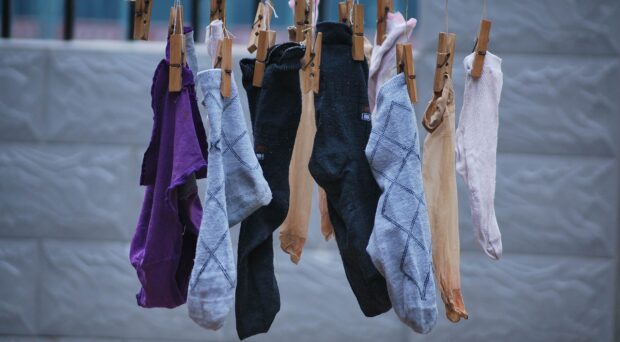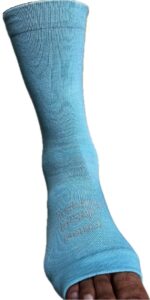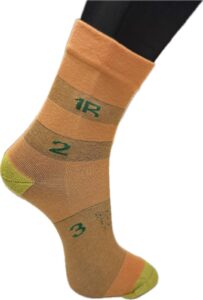
In a recent blog post, I introduced our study developing a smart-sensing sock to detect and prevent diabetic foot ulcers caused by rubbing, and the importance of understanding patient context when designing health devices.
We have now spoken with a range of people with diabetic neuropathy, as well as their carers and podiatrists, and asked them if, when, and how, they would use a device like the smart-sensing sock we are designing. Here is what we found.

To many, the idea seemed like science fiction, too good to be true, or they doubted the possibility of a sock that could accurately measure rubbing and alert the wearer in real time. Since the device has not been created or tested yet, they were right, so we imagined these ‘sci-fi-socks’ as perfectly calibrated to them.
But the story was not straightforward. No matter how great the socks were, participants had three major questions:
Why do I need it?
Even though participants all had diabetic neuropathy (diminished sensation in their feet), they were not convinced about it. Neuropathy sounds like the absence of feeling, but as we know from sitting on our feet for too long, numbness is actually very uncomfortable. There are also different types of nerves that may not all be impacted equally (e.g., light touch versus pressure or motion) which can add to the confusion. Sometimes too, participants were doubtful that rubbing was a risk for them (many ulcers are caused by excessive rubbing from poorly fitting shoes, or even from changes in gait caused by neuropathy). Almost half of our patient participants underestimated their risk for ulcers, and podiatrists noted that this common problem can lead to low levels of self-care and delays in treatment seeking.

This indicates that people might need support to evaluate their risk. The sock could be used to help bring issues to their awareness. For example, it could indicate which footwear or activities are causing more rubbing on the foot. This could help people take more control of their foot health depending on their unique lifestyle.
How do I use it?
Understanding about diabetic foot ulcers and how to prevent them was limited. Even when participants did know, a lot of them were overwhelmed by already busy lives, and often in denial. Ulcers and the associated risk of amputation were frightening to many and easier to forget about than working daily to prevent them.
It is crucial that the sock comes with clear, simple, step-by-step instructions on how, and when, to respond to an alert. These could be digital, as part of the feedback system, or as a simple pamphlet to be carried separately to support decision-making and reduce cognitive burden.

Can I cope?
The experience of ulcer, and amputation, can be overwhelming. Infections can spread rapidly and take months to heal. Participants were stressed, frustrated, anxious and depressed. Would this sock be just another thing to worry about?
The sock needs to be a tool that supports foot health management. This means setting realistic expectations about what it can and cannot do, as well as encouraging users to take an active role in their own health management.
Our verdict
No matter how well the device can detect rubbing in the foot, in order to help people best, it needs to be presented as a tool, as a component of a wider intervention supporting people with diabetic neuropathy to better understand and manage their condition.
Comments